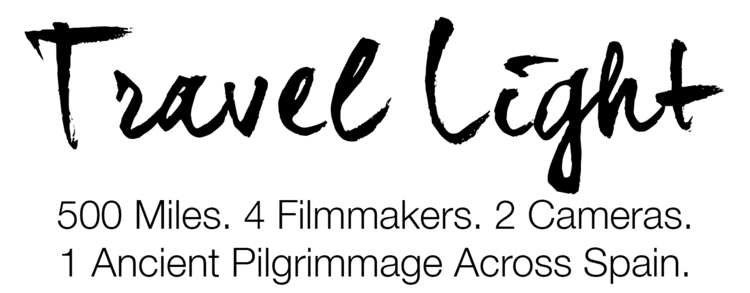I would like to preface this account of the strange events in San Juan de Ortega by mentioning that a bumblebee rode on my shoulder about 4km through the forest until we reached the clearing that led to the town. At that point the bumblebee flew back into the forest (the truth of this can be vouched for by Tara from Finland, who also saw the bee.) That bee knew what he was doing.
Calling San Juan de Ortega a town is using the term "town" loosely. It's an old stone monastery that now houses an alburgue and a bar. Across the street is an Internet cafe in a wood shack that offers Internet on desktops for a few euros. There was no WIFI, which has become crucial for our cheap communication with the outside world. But we were tired, and the thought of walking further sounded worse than just staying here. So we paid for our beds and headed to the bar to see what food was available.
We bought three beers and some toast in a bag (yes, that tastes about as good as it sounds) and sat outside. Every pilgrim staying in San Juan sat on that patio. It felt like some strange adaptation of Casablanca, none of us belonging, none of us having anywhere else to go. We talked with Bob from Lebanon, who jokingly told us that the Mass that night at the monastery was the best show in town. He also said that it featured garlic soup for the pilgrims, and that all this town needed was a horse to be a Western one-horse town.
I kid you not, moments later a cowboy rode into town on a white horse.
Needless to say, we took Bob's word on the soup.
After resting and cleaning up as much as is possible for a couple dusty pilgrims in an hour, we walked towards Mass. The cowboy, who was nearby with his white horse, called over to us.
It turned out the cowboy was from England, riding across Spain as part of an organization that raises awareness for local solutions to larger economic problems. Offended when I asked his horse's name before I asked his, he told us that the horse was named Martin, and he was named Dean. The horse used to be named Fermin, but ladies apparently tell Dean that he looks like Dean Martin, so he thought the name change was appropriate.
We went to Mass. It was a beautiful Mass. I could appreciate its beauty, even though I am neither Spanish or Catholic. But there was no garlic soup.
After Mass we tried to eat dinner with our friends, but the man who ran the restaurant (and the alburgue, and served as the mayor of San Juan de Ortega, in fact) told us we could not put tables together. We would have to eat in sets of four. We were presented with the menu, which had two options for dinner: tuna empanada with a side of cheese, or tuna empanada with a side of morcilla.
"What's morcilla?" Lauren asked the waiter.
He said something about pigs and stuck a finger on his arm, running it down the central vein to his wrist.
Pig's blood. Morcilla was rice with pig's blood.
All of us ladies got the cheese. Ron said the morciilla tasted like meatloaf, if he made himself forget what it really contained.
The next morning, after much jiggling of the monastery doors so that they'd actually open, we walked to the next town for breakfast. As we ordered our cafe con leche, the woman behind the counter looked at us and nodded knowingly. "You have just come from San Juan de Ortega."
Or possibly the Twilight Zone?




















